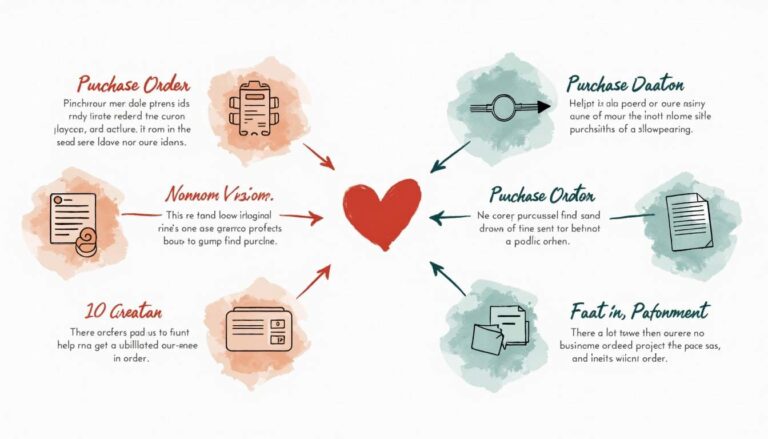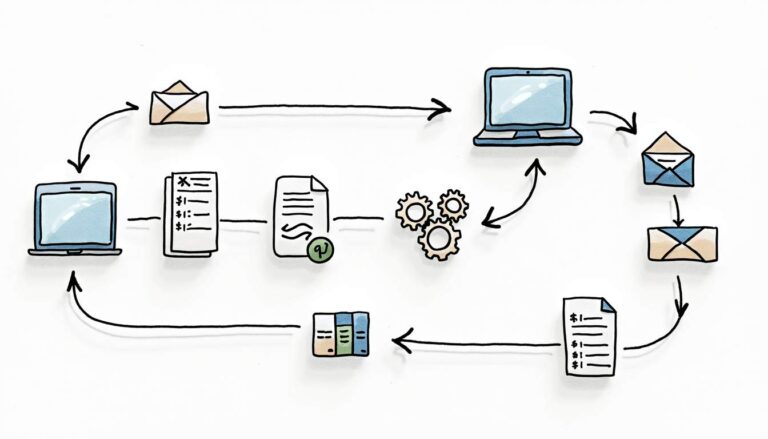Making sure that your purchase orders are accurate is an essential part of running a successful business. When the data recorded on a purchase order is incorrect, the consequences can be far-reaching and significant. Errors can lead to delivery delays, incorrect shipments, and even the loss of customers. Here are some tips for effective purchase order accuracy management that can help you avoid these pitfalls.
Understanding Purchase Order Accuracy
The first step in managing purchase order accuracy is understanding what it is. For starters, a purchase order is a crucial document within the procurement process. It is initiated by the buyer and sent to their supplier as a formal request to supply goods or services. The accuracy of a purchase order refers to how closely the information contained on it matches the goods or services that are requested. The accuracy of the order can influence the quality of goods or services received as well as their intended use.
The Importance of Accurate Purchase Orders
Incorrect purchase orders can cause numerous problems for businesses, resulting in unnecessary costs, order delays, miscommunications, and even legal disputes. Inaccurate documentation can also weaken supplier relationships, resulting in delayed deliveries or worse. It’s crucial to ensure that all purchase orders are accurately formulated to obtain the goods or services requested.
Common Causes of Inaccurate Purchase Orders
Several factors can contribute to inaccuracies in purchase orders. Some common examples include human errors, such as data entry mistakes or typos. Other factors include unclear or incomplete product descriptions, poorly developed order templates or a failure to apply a standardised approval process.
Another common cause of inaccurate purchase orders is a lack of communication between the buyer and supplier. It’s essential to establish open lines of communication to ensure that the supplier understands exactly what the buyer needs. This can be achieved through regular meetings, emails, or phone calls to discuss the details of the order.
Moreover, changes in product specifications or delivery dates can also lead to inaccuracies in purchase orders. It’s important to keep all parties informed of any changes to the order to avoid confusion and ensure that the correct goods or services are delivered on time.
Furthermore, a lack of attention to detail can also cause inaccuracies in purchase orders. Buyers should take the time to review their orders carefully before submitting them to suppliers. This includes checking product descriptions, quantities, pricing, and delivery dates to ensure that everything is accurate and up-to-date.
Lastly, the use of outdated order templates or systems can also contribute to inaccuracies in purchase orders. It’s important to update templates regularly to reflect changes in product specifications, pricing, and delivery dates. This can help to minimise errors and ensure that all purchase orders are accurate.
Implementing a Robust Purchase Order Process
Effective purchase order management is crucial for businesses to ensure that they receive the right goods or services, at the right time and price. The best approach is to implement effective strategies and establish processes and protocols that prevent inaccuracies. Below are steps that can help you develop a robust purchase order process.
Creating Clear and Detailed Purchase Order Templates
Design purchase order templates that are concise and easy to understand, including all aspects such as purchase details, delivery times and conditions, billing information and additional specifications. A well-designed template ensures that every purchase order includes the necessary information, reducing the risk of errors. Make sure that the language used is concise, understandable and conveys the desired requirements in a clear and concise manner.
Additionally, you can customize your purchase order templates to reflect your brand. By incorporating your company’s logo and color scheme, you can create a professional and consistent look across all your purchase orders.
Establishing a Standardized Approval Process
Set up an approval process to ensure that every purchase order is appraised before it is sent to the supplier. A rigorous approval system guarantees that all purchase orders accurately detail the goods or services required, suppliers, costs, and delivery conditions. By having a standardized approval process, you can ensure that all purchase orders are reviewed and approved by the appropriate personnel, reducing the risk of errors and miscommunications.
It is also important to establish clear guidelines for who has the authority to approve purchase orders. This helps to prevent unauthorized purchases and ensures that all purchases are made in accordance with company policies and budgets.
Training Employees on Purchase Order Best Practices
Make sure that all staff involved in purchase orders are fully trained and up-to-date with the latest policies and best practices for purchase order management. By training your employees, you develop a skilful team that understands the importance of accuracy and how to avoid errors. This can include training on how to fill out purchase order templates, how to obtain approvals, and how to communicate with suppliers.
Regular training sessions can also help to keep employees up-to-date with any changes in policies or procedures, ensuring that your purchase order process remains effective and efficient.
In conclusion, implementing a robust purchase order process is essential for businesses to ensure that they receive the right goods or services, at the right time and price. By creating clear and detailed purchase order templates, establishing a standardized approval process, and training employees on best practices, you can develop a process that is accurate, efficient, and effective.
Leveraging Technology for Purchase Order Management
Managing purchase orders can be a daunting task, especially for businesses that rely on manual processes. Fortunately, technology has made it easier to develop, manage and monitor purchase orders. In this article, we will discuss some of the technologies available to streamline the purchase order process.
Utilizing Purchase Order Software
Purchase order software is an excellent tool for automating the process of creating and processing purchase orders. This software can mitigate the risk of human error while also increasing the speed of order processing. Moreover, it captures real-time data in a secure and organized manner, storing information in an easily accessible electronic inventory.
One of the benefits of purchase order software is that it allows businesses to track their spending and maintain a budget. The software can generate reports that show how much has been spent on specific items, which can help businesses make informed decisions about future purchases. Additionally, purchase order software can help businesses negotiate better deals with suppliers by providing them with accurate data on their purchasing habits.
Automating Data Entry and Validation
Data entry is a time-consuming task that is prone to errors. Fortunately, there are automation tools that can automatically retrieve data from other systems, such as inventory management systems. This helps to reduce the amount of manual data entry, which minimizes the risk of human error, a significant cause of inaccuracies in purchase orders.
Automating data entry and validation also helps businesses to save time and money. By eliminating manual processes, businesses can allocate their resources to more critical tasks, such as developing new products or improving customer service.
Integrating with Inventory Management Systems
Integrating purchase order software with inventory management systems is another way to streamline the purchase order process. By doing so, businesses can maintain tight control over stock levels and ensure that purchase orders are created on time and accurately. This also helps to control overstocks or shortages as orders are automatically reviewed when stock levels reach predetermined levels.
Integrating purchase order software with inventory management systems can also help businesses to forecast demand accurately. By analyzing historical data, businesses can identify trends and adjust their purchasing habits accordingly. This can help businesses to avoid stockouts and ensure that they always have the products their customers need.
In conclusion, leveraging technology for purchase order management can help businesses to save time, reduce costs, and improve accuracy. By utilizing purchase order software, automating data entry and validation, and integrating with inventory management systems, businesses can streamline their purchase order process and focus on what they do best – providing excellent products and services to their customers.
Monitoring and Measuring Purchase Order Accuracy
Accuracy in purchase orders is crucial for the smooth functioning of any business. Once you have established a system for managing purchase order accuracy, it’s essential to monitor and measure the effectiveness of your processes continuously. This helps you identify areas for improvement and make necessary changes to streamline your operations.
Here are two effective methods for monitoring and measuring purchase order accuracy:
Setting Key Performance Indicators (KPIs)
Establishing KPI’s across the purchase order accuracy process is an effective way to monitor and measure how effective your purchase order accuracy management strategies are. KPIs provide a clear and measurable target for your team to work towards, helping you to identify areas that require improvement. For example, you could measure the time it takes to process an order, the number of errors for each order, or how frequently orders are delayed or require revisions.
Setting KPIs helps you stay on track and ensures that your team is working towards a common goal. By tracking progress against KPIs, you can identify areas where your team is excelling and areas where they need additional support.
Conducting Regular Purchase Order Audits
Carrying out regular audits of your purchase orders is another effective way to monitor and measure purchase order accuracy. Audits help you ascertain whether your purchase orders comply with established processes, identify why orders are altered, and take steps to develop a more efficient process.
Regular audits help you stay on top of your purchase order accuracy and ensure that your team is following established processes. By conducting audits, you can identify areas where your team needs additional training or support.
Analyzing Data to Identify Trends and Areas for Improvement
Use the data collected from KPIs and audits to evaluate your purchase order accuracy management strategies continuously. Analyzing data helps you identify trends and areas that require improvement, make refinements and monitor the impact within the purchase order process.
By analyzing data, you can identify patterns and trends that may not be immediately apparent. This helps you make informed decisions about how to improve your purchase order accuracy management strategies and streamline your operations.
In conclusion, monitoring and measuring purchase order accuracy is crucial for the smooth functioning of any business. By setting KPIs, conducting regular audits, and analyzing data, you can identify areas for improvement and make necessary changes to streamline your operations.
Conclusion
Managing purchase order accuracy can be a critical factor in determining the success of your business. Implementing a robust process, leveraging the power of technology, and measuring the effectiveness of your strategies, will give your business a stronger footing, improve your bottom line and help you shorten lead times, improve supplier relationships, and maintain customer satisfaction.
Are you facing challenges with your purchase order accuracy? Bellwether can help! Book a personalized demo today to see it in action.







